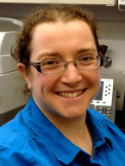E-cadherin immunohistochemical expression in invasive lobular carcinoma of the breast: Correlation with morphology and CDH1 somatic alterations Journal Article
| Authors: | Grabenstetter, A.; Mohanty, A. S.; Rana, S.; Zehir, A.; Brannon, A. R.; D'Alfonso, T. M.; DeLair, D. F.; Tan, L. K.; Ross, D. S. |
| Article Title: | E-cadherin immunohistochemical expression in invasive lobular carcinoma of the breast: Correlation with morphology and CDH1 somatic alterations |
| Abstract: | E-cadherin (ECAD) immunohistochemical (IHC) expression is lost in ∼90% of invasive lobular carcinomas (ILCs) owing to genomic alterations of CDH1. We examined morphologic features and ECAD IHC expression in invasive breast carcinomas (BCs) with known CDH1 alterations. Between January 2014 and May 2018, 202 cases of BC with a CDH1 somatic alteration were identified. ECAD expression was lost in 77% (155/202) of cases and was retained in 23% (47/202) cases. Most (90%, 139/155) ECAD-negative cases were morphologically classified as ILC, while the remaining (10%, 16/155) were invasive mammary carcinoma with mixed ductal and lobular features (IMC). Of 47 cases with ECAD staining, 62% (29/47) were classified as ILC, 23% (11/47) were classified as IMC, and 15% (7/47) were classified as invasive ductal carcinoma (IDC). Of note, 51% (24/47) of ECAD-positive cases were initially diagnosed as IDC or IMC based on ECAD expression alone. For ECAD-negative BCs, 98% (152/155) of CDH1 alterations were truncating, and 2% (3/155) were variants of unknown significance (VUS). Truncating CDH1 alterations were identified in the majority of ECAD-positive BCs (72%, 34/47); however, VUS-type CDH1 alterations were more prevalent (28%, 13/47) in ECAD-positive BCs than in ECAD-negative BCs. Although 90% of ECAD-negative tumors were compatible with ILC in this study, 17% (29/168) of ILC cases were ECAD positive. In addition, CDH1 truncating alterations were seen in ECAD-positive ILC, supporting the notion of aberrant ECAD staining. Therefore, ECAD IHC expression must be interpreted in conjunction with morphology, and BC with classic histologic features of ILC should not be reclassified as IDC/IMC based solely on the status of ECAD IHC expression. © 2020 Elsevier Inc. |
| Keywords: | immunohistochemistry; controlled study; human tissue; protein expression; gene mutation; major clinical study; somatic mutation; histopathology; cell structure; breast cancer; cohort analysis; uvomorulin; cancer morphology; correlational study; e-cadherin; cdh1; lobular carcinoma; protein p120; lobular; p120; human; article |
| Journal Title: | Human Pathology |
| Volume: | 102 |
| ISSN: | 0046-8177 |
| Publisher: | Elsevier Inc. |
| Date Published: | 2020-08-01 |
| Start Page: | 44 |
| End Page: | 53 |
| Language: | English |
| DOI: | 10.1016/j.humpath.2020.06.002 |
| PUBMED: | 32599083 |
| PROVIDER: | scopus |
| PMCID: | PMC7484442 |
| DOI/URL: | |
| Notes: | Article -- Export Date: 1 September 2020 -- Source: Scopus |
Altmetric
Citation Impact
BMJ Impact Analytics
MSK Authors
Related MSK Work












